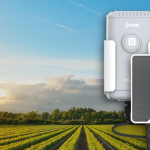For the first time, new smart technology is making it easier for viticulturists to make quick decisions about how best to cultivate their valuable crops.
Researchers at the University of Adelaide have developed a prediction and advisory system.
“Viticulturists are not short of data about their crops. The challenge for busy growers is collating it into meaningful information from a whole range of different sources,” said University of Adelaide lead researcher Dr Matt Knowling.
The VitiVisor prediction and advisory system is built on VineLOGIC, which was developed originally by CSIRO with input from collaborating viticulturists, modellers and programmers, to create a virtual vineyard for running simulations.
VineLOGIC forms a key part of the predictive and modelling aspect of the larger VitiVisor project.
VitiVisor is an integrated platform which collects information direct from the vineyard via cameras and sensors analysing the large amounts of data produced to assess vineyard performance and aims to provide growers with co-ordinated advice on management practices that deal with such things as irrigation, pruning and when to apply fertiliser, fungicide and pesticide.
“At first VineLOGIC was primarily a teaching tool about viticulture, but it’s evolved through working extensively with growers, asking them about their needs and concerns. Importantly, in the interests of accelerating uptake and adoption of these types of technology, VineLOGIC has also – as part of VitiVisor – been made open source, available in GitHub for anyone to use in their technology products as well,” Dr Knowling said.
“Our prediction and advisory system makes forecasts of what is likely to happen on the vineyard and what key vineyard outcomes are likely to be at the end of the season. It makes these forecasts in real time based on all available data – just like weather forecasting.
“Our platform ensures that VineLOGIC is making best possible predictions about what a grower cares about by learning from all available data in the vineyard.”
Australian wine producers and grapegrowers battle uniquely tough weather conditions and often find it difficult to predict optimum outcomes – to the detriment of their crops and their bottom line.
Riverland grower Ben Haslett, a University of Adelaide alumni and Nuffield Scholar who runs Woolenook Fruits at Murtho, explained that Australian viticulture operates in a very competitive world market.
“Inputs such as labour, electricity, fuel, compliance costs, water and fertiliser are not cheap inputs,” he said.
“We need to be competitive to optimise our quality and production. This also means looking after our natural land and water assets so we can rely on them for generations to come.
“To do this we have to produce the best quality and volume of wine grapes per megalitre of water by monitoring and fine-tuning our practices and physical inputs.”
Haslett added that technology has provided mechanisms to measure a whole range of factors but data “not used to generate action are just numbers on a page”.
“The challenge is finding a way to crunch all this data to determine the cause and effect relationships that pave the way to optimal quality and production,” he said.
“The key to our food production success is having mobile access to this actionable data … a platform that uses data analytics to provide a roadmap to optimisation. A proven prediction and advisory system will be a big step forward.”
VineLOGIC is available from CSIRO data portal here.
Are you a Daily Wine News subscriber? If not, click here to join our mailing list. It’s free!





















